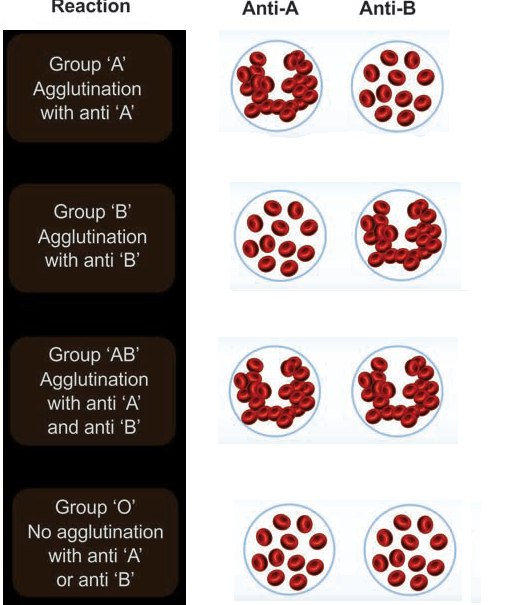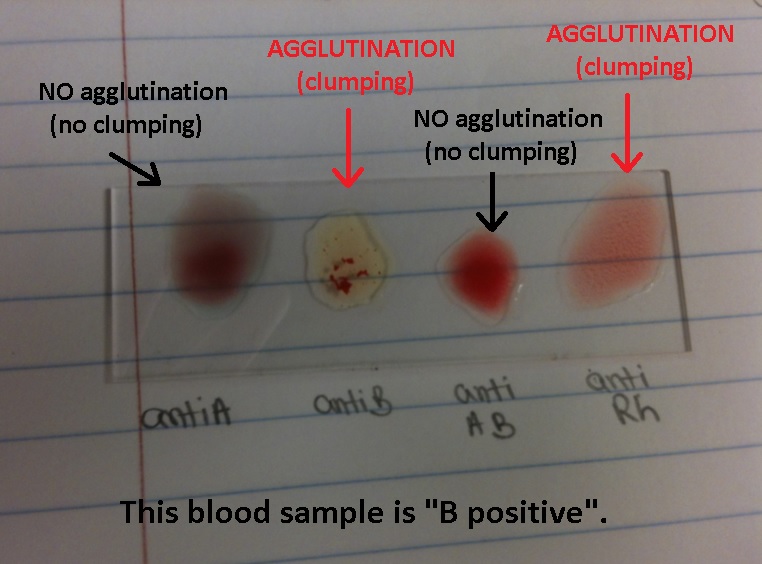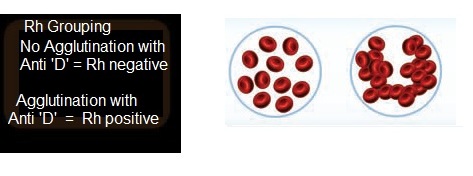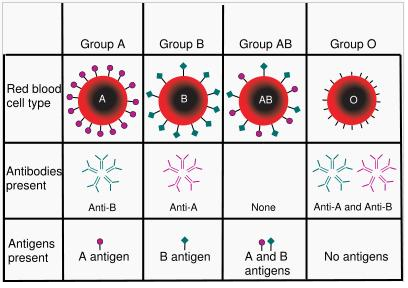Blood Group
Dr.A.P.Ganesan
Komarapalayam
Different Systems of Blood Grouping
Depending upon the presence and absence of Agglutinogen (Antigen) and Agglutinin (antibody), the blood is classified as the following systems of groups :
1. ABO System
2. Rhesus System
3. Kell System
4. Kidd System
5. Detty System
6. Lutheran System
7. MNS System
8. Lewis System
9. P.System
The ABO Blood group system
The ABO Blood group system is the commonest one of clinical importance.
ABO Blood Group System
In this system, the blood is grouped according to the presence of two factors. They are antigen or agglutinogen and antibodies or agglutinogen
There are two types of antigens : Antigens A and B
There are two types of antibodies : Antibodies a and b
The antigens are located in the membrane of RBCs and the antibodies are present in the serum.
Thus the blood is classified into four groups namely : Blood group A, B, AB and O
The blood group A consists of antigen A and Antibody b
The blood group B consists of Antigen B and antibody a
The blood group AB consists of Antigens A & B and no antibody
The blood group O consists of no antigen and antibody a & b
Rh Blood Group
Research workers Lansteiner and Weina had discovered that the injection of blood of Rhesus monkey into guinea pig caused the formation of agglutinin in the blood of guinea pig.
These agglutinins caused agglutination of the monkey corpuscles and also human corpuscles.
Thus it has been concluded that Rhesus corpuscles contain a substance called agglutinogen similar to agglutinogen present in human RBCs. This is called 'Rh factor or Rh antigen'
The blood containing Rh antigen is called Rh positive.
About 85% of people are Rh positive; the remaining 15% of people are Rh negative
But there is no corresponding naturally occurring antibody in the blood.
When the blood of Rh +ve person is injected into Rh - ve person the antibody or anti Rh factor is formed. Such transfusion i.e. first transfusion causes only the production of anti Rh factor, but no reaction occurs.
But if a second similar transfusion is given 10 days after the first transfusion a severe and fatal reaction occurs due to the reaction of the accumulated and antiRh factor or agglutinin and Rh factor.
Complications of Mismatched Blood Transfusion
The result of incompatible blood transfusion :
- Agglutination of red cells and haemolysis
- Jaundice
- Haemoglobinuria
- Renal Failure
The procedure of Grouping the blood
The ABO Grouping
Take two slides and mark them A and B
Place one drop of antiserum A on the slide A and antiserum B on the slide B
Then the finger of the patient is sterilized with some antiseptic like spirit and pricked with needle. Place one drop of blood on each of the sllides. Mix the blood and sera with a separate sitrrer. Allow to react for 5 mt. Then the slides are examined under a microscope
If the clumping of cells occurs in the slide A only, the group of the pt is 'A'
If the clumping of cells occurs in the slide B only, the group is 'B'
If the clumping of cells occurs in both the slides A and B the group is 'AB'
If the clumping of cells does not occur in both the slides the group, the group is 'O'
Determination of Rh group
Take a slide and place one drop of antiserum 'D' on the slide. Add a drop of blood to be tested over the antiserum. Mix the antiserum. Mix the antiserum and blood very well. After 5 mt , the slide is examined for clumping of cells. If clumping of cells occurs, it is Rh +ve and if there is no clumping, it is Rh - ve.
* * * * * * * * * *





